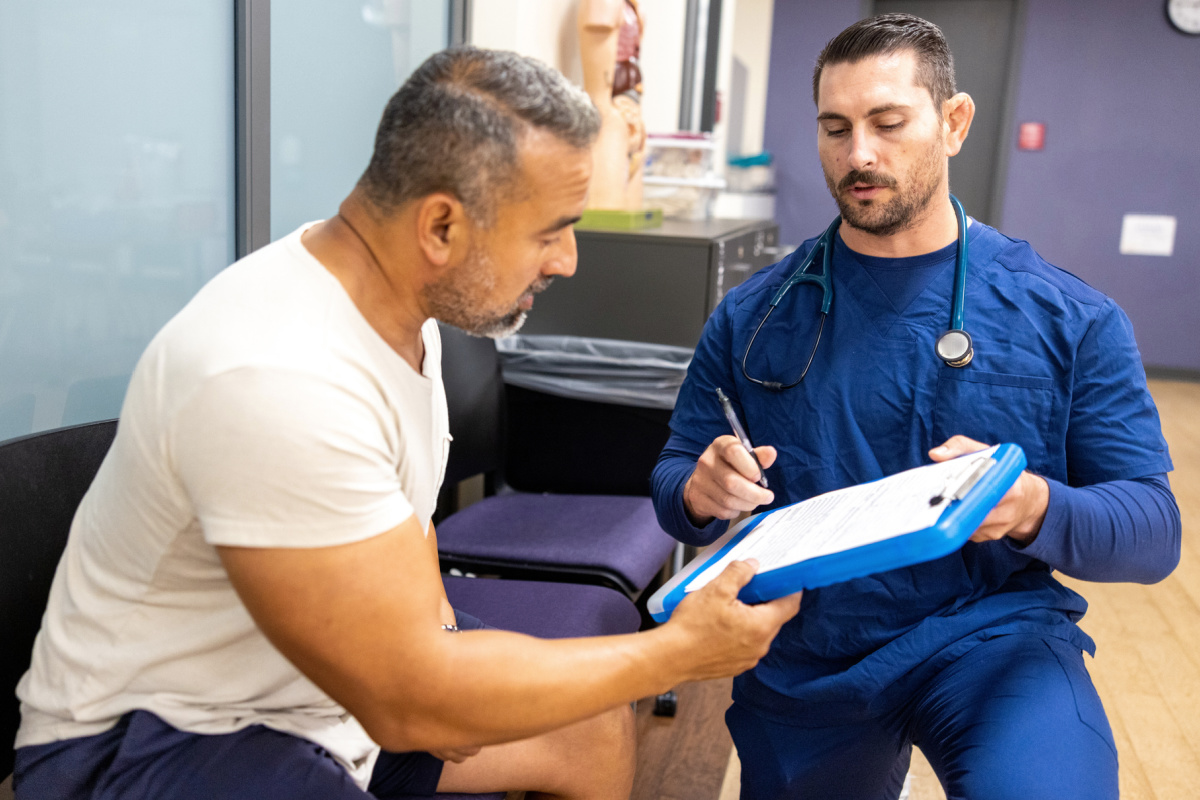A study from Finland caught my attention. This study probably also caught the attention of third party reimbursers.
Its conclusion:
In this trial involving patients without knee osteoarthritis but with symptoms of a degenerative medial meniscus tear, the outcomes after arthroscopic partial meniscectomy were no better than those after a sham surgical procedure.
Some detail:
Approximately 700,000 arthroscopic partial meniscectomies are performed annually in the United States alone, with annual direct medical costs estimated at $4 billion. A recent randomized trial showed that arthroscopic partial meniscectomy combined with physical therapy provides no better relief of symptoms than physical therapy alone in patients with a meniscal tear plus knee osteoarthritis.
This study wanted to address patients without knee osteoarthritis. Its rationale was that arthroscopic partial meniscectomy in patients with osteoarthirits might be addressing the pathology too late.
The researchers enrolled patients 35 to 65 years of age who had knee pain (for >3 months) that was unresponsive to conventional conservative treatment and had clinical findings consistent with a tear of the medial meniscus. Patients with an obvious traumatic onset of symptoms or with knee osteoarthritis as defined with the use of clinical criteria (American College of Rheumatology) or radiographic criteria (Kellgren–Lawrence grade >1) were excluded.
Every patient had diagnostic knee arthroscopy. Half the patients also had partial meniscectomy. The other half had a “simulated” meniscectomy. The description of the simulation is fascinating:
To mimic the sensations and sounds of a true arthroscopic partial meniscectomy, the surgeon asked for all instruments, manipulated the knee as if an arthroscopic partial meniscectomy was being performed, pushed a mechanized shaver (without the blade) firmly against the patella (outside the knee), and used suction. The patient was also kept in the operating room for the amount of time required to perform an actual arthroscopic partial meniscectomy.
The results:
Both groups had significant improvements in two outcome measures at 12 months. The two primary outcomes were Lysholm knee score and knee pain after exercise. There were no significant differences between groups.
Note: Each group failed conservative management. And regardless of the technique, each group improved after the surgery – meniscectomy or sham surgery.
While some might conclude that no surgery should be performed in such patients, others will conclude the opposite. Remember, each group improved. Sham surgery, while characterized as a placebo control, is not the same as swallowing a sugar pill.
I’m certain we’ve not heard the last word on this. It will be interesting to see what third party payers say about reimbursing for arthroscopic meniscectomies.
The other question is what orthopaedic surgeons should tell patients regarding studies like this. In terms of documentation and informed consent, consideration should be given to proactively referencing the study. If there’s a complication, this advance discussion will demonstrate that the patient was informed vis a vis expectations – and that each group in the study did improve compared to baseline. And the complication rate was quite low for patients who underwent this procedure compared to expected benefit.
Sometimes the more we learn, the less we really know.





It’s amusing to even consider the possibility of a “sham” surgery study being done in the US. What if a patient had a terrible intra-operative complication or even died from or immediately after the sham surgery?
Plaintiffs’ attorneys would have an orgiastic apoplexy at the thought of such a study in the US. Even without a bad result, suits would be filed. We are fortunate that there are places in the World where such studies can actually be performed, unimpeded by a tort system filled with testosterone.
But there are already similar situations: I had a nasty case of the flu last week even though I had been immunized against the virus. Underline virus. I was producing enough yellow phlegm to lubricate a medium sized diesel engine. When that happens, you always think about antibiotics. But they would do no good. Patients always want to take antibiotics in such situations.
I think that most doctors are making good headway on this issue. Most patients now understand that antibiotics do no good for cold or flu. It took an enormous public relations’ campaign to educate the public on this issue.
Then, there is a medical/surgical industry of knee surgery (like there is for foot/ankle surgery). As a previous owner of a Medicare Certified Surgical Center, I would wonder how many cases I would lose if orthopods stopped doing these? I mean, it’s a natural thought.
But the bottom line is my knee of course: Should I submit to this? My daughter already did years ago, and is fine. But then, she would be fine anyway, according to the study.
“Sometimes the more we learn, the less we really know.”
Michael M. Rosenblatt, DPM
Weve know for years that arthroscopy for degenerative arthritis does no good.
The control arm patients did not have a placebo; they underwent a substantial wash out which is known to have beneficial effects itself.
I started performing diagnostic arthroscopy in 1977. Arthroscopic instrumentation came later, and motorized shavers later still.
However, we discovered right from the start that diagnostic arthroscopy is NOT A PLACEBO, it is a TREATMENT. In order to see well, it is necessary to lavage out the visable clouds of debris we found floating in the knee. Chemical irritants from breakdown of cartilage are also removed. As a result, the very commonly found reactive synovitis quickly decreases post lavage.
What the study “discovered”, 30+ years later, is that for that small group of patients who do not have a traumatic meniscal tear, and who do not have radiographically identifiable osteoarthritis, and who have not responded to rest, NSAIDs, or viscosupplementation within a few months, ARTHROSCOPIC LAVAGE IS AN EFFECTIVE TREATMENT.
But of course the media and payers will willfully ignore this.
If you want to save money on knee surgery, require all patients considering knee surgery have a Rheumatology evaluation. I find a lot of people with knee osteoarthritis have symptoms of non-osteoarthritis pain of the knee – especially anserine bursitis. This would also evaluate the knee for inflammatory arthritis. Unfortunately joint fluid is not always sent for cultures, cell counts, crystal evaluation (and many hospital labs do not do a good job with crystal evaluation or even stain for apatite crystals). If the rheumatologist clears the patient you have better judgment that there is agreement that the patient needs the surgery.
Also as noted even years ago in an Lancet article in the 1970’s knee injections with saline were therapeutic and as noted above knee lavage can be therapeutic. How many of the patients in the study had knee injections before surgery – including steroid injection or hyaluronic acid injections